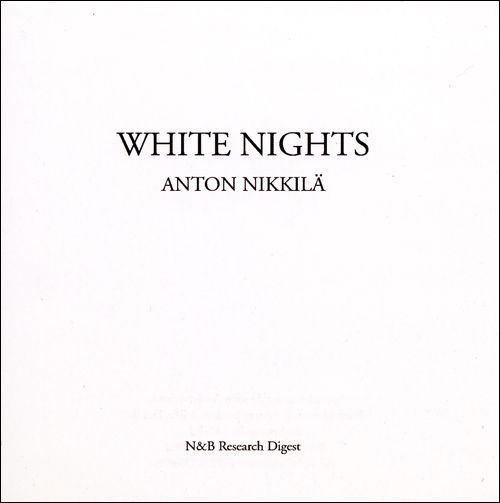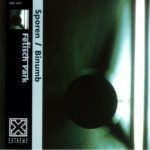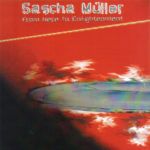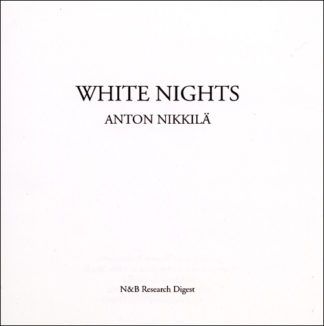White Nights
12,50 € VAT included
Only 2 left in stock
“The second album by the Finnish artist Anton Nikkilä is where he found his own voice while reaching for ”imaginary post-digital music of the Soviet Union”, as the album’s press text proclaimed. The basic concept was the plunderphonic use of samples of Muzak and other elevator music, and their interplay with ventilator hums, industrial noises and references to the Soviet cult of technology and factory labour.
Five of the album’s tracks and their underlying ideas were further illustrated, elaborated and crystallized three years later in 2005, on the video and installation ”SEVnet” directed by the Finnish artist Pekka Sassi. The work was a series of ”music videos” directed by five different imaginary video makers and broadcasted via the imaginary computer/television network called SEVnet in an alternative reality, where Communism has won and the Soviet Union has defeated the West simultaneously both in the Space Race and in the Computerisation Race.
Finland has been always a intermediate barrier between Russia and Scandinavia. We don’t know much about finnish music here, however there exists a strong and influential electroacoustic music school. But in the underground electronic music, there was just a few minimal-techno acts like famous Panasonic and other musicians starring on the Sahko Recordings label. With the inception of N&B Research Digest label, it got the additional support but also the opposition. N&B means Nikkila & Borisov, two co-founders of the label, both well known electronic musicians which join their forces to promote modern russian music worldwide. All N&B releases are concerned with Russia, and this second Nikkila’s solo album takes a look from the outside into the soviet science and technical progress history. Honestly speaking, the track titles like “100 Years Of Soviet Cybernetics” and “How Steel Was Tempered” sounds too grotesque for me. But fortunately, the music avoids the standard set of cliches and tends to be really remarkable. The key point of composition is the contrast between the most common musical approaches, original and computer-treated. Each track comprises musical forms of the 60s being separated and replaced from the context, and completely dehumanized, machine sounds and noises being brought to the foreground. Absolutely schizoid mix of heterogenous fragments, it seems to be nevertheless quite integrated and harmonized, showing the real music legacy succession of the such remote periods. Plunderphonic exploration and nostalgia for heroic zeal in the light of industrial aesthetics and romantic technocracy should appeal to the wide audience as well.”



![Daedelus Her's Is > [sic]](https://anagramspace.com/wp-content/uploads/2012/07/11746-150x150.jpg)










